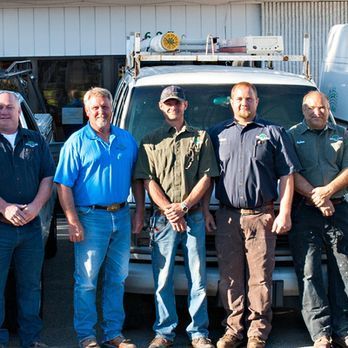How to Unfreeze Frozen Pipes?
Frozen pipes are a common issue, especially during the cold winter months. When temperatures drop, the water inside pipes can freeze, potentially causing them to burst. Dealing with frozen pipes can be stressful, but with the right knowledge and tools, you can often resolve the issue yourself and prevent costly damage. This guide walks you through the steps to safely thaw and fix frozen pipes.
Identify the Frozen Pipes
Before you can start thawing frozen pipes, you must determine which pipes are affected. Look for signs such as reduced water flow, strange noises, or visible frost on the pipes. This step is crucial to pinpoint the problem areas.
Turn Off the Water Supply
Once you've identified the frozen pipes, it's essential to turn off the water supply to prevent any leaks or bursts during the thawing process. Locate the main shut-off valve for your home and close it.
Open Faucets
To release pressure and allow for expansion as the ice thaws, open the faucets connected to the frozen pipes slightly. This will also let you know when the water starts flowing again.
Choose a Safe Thawing Method
There are several methods to thaw frozen pipes, including using a hair dryer, heat tape, hot water, or electric pipe thawing machines. We'll discuss each of these methods in detail, so you can choose the one that suits your situation best.
Thaw the Pipes
Carefully apply heat to the frozen section of the pipe, starting from the end nearest to the faucet. Move the heat source back and forth to distribute the heat evenly. Be patient and avoid using open flames, which can damage the pipe.
Check for Leaks
After successfully thawing the pipes, check for any leaks or damage. If you notice any issues, it's important to address them promptly to prevent further problems.
Prevent Future Freezing
To avoid frozen pipes in the future, insulate vulnerable pipes, maintain a consistent indoor temperature, and keep faucets dripping during freezing weather.
Additional Tips for Thawing Frozen Pipes
It's essential to approach the task of unfreezing pipes with caution and care. Here are some additional tips to help you effectively deal with frozen pipes:
a. Use a Hairdryer: A hairdryer is a safe and readily available tool for thawing pipes. Hold it a few inches away from the frozen section and move it back and forth until the ice melts.
b. Heat Tape or Heating Cable: These products are designed to wrap around pipes and provide controlled heat. Follow the manufacturer's instructions for safe usage.
c. Hot Water Method: Gently pour hot (not boiling) water over the frozen area. Start from the faucet side and work your way back. This method may take some time but can be effective.
d. Electric Pipe Thawing Machines: If you have access to an electric pipe thawing machine, it can be a fast and effective way to thaw pipes. However, this equipment is typically used by professionals.
e. Never Use an Open Flame: Avoid using a torch or open flame to thaw pipes, as it can pose a fire hazard and damage the pipe.
Emergency Situations
If you encounter a severe burst pipe or if you're unable to locate the frozen area, it's essential to contact a professional plumber immediately. They have the expertise and tools to handle complex situations and prevent further damage to your plumbing system.
Preventative Measures for Future Freezing
To reduce the risk of frozen pipes in the future, consider taking these preventative steps:
a. Insulation: Properly insulate exposed pipes in unheated areas, such as attics, basements, and crawl spaces. Insulation sleeves or heat tape can be used.
b. Maintain a Consistent Indoor Temperature: During cold weather, keep your home's temperature above freezing, even when you're away. Opening cabinet doors to allow warm air to circulate pipes can also help.
c. Dripping Faucets: Allow faucets to drip slowly during extremely cold weather. The moving water is less likely to freeze.
d. Seal Cracks and Gaps: Seal any cracks or gaps in your home's exterior to prevent cold air from entering and affecting your plumbing.
By following these steps, you can effectively unfreeze frozen pipes and safeguard your plumbing system from potential damage. Remember, quick action and preventive measures are key to maintaining a well-functioning plumbing system, especially during the winter months.

Emergency Plumbers
At sunshine plumbers, we are proud to be on call 24 hours a day, 365 days a year, ready to provide prompt and reliable emergency plumbing services
Residential Plumbing
Let sunshine plumbers take care of your plumbing needs, and we'll make sure your home's plumbing system runs smoothly and efficiently.
Commercial Plumbing
Trust sunshine plumbers to keep your commercial plumbing system in top shape, ensuring smooth operations and customer satisfaction.
